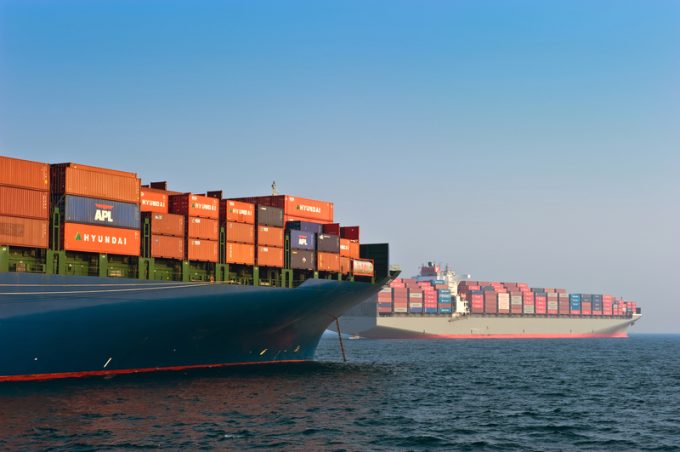Container spot rates have peaked as all major trades see prices fall
There was more evidence in this week’s container port freight markets that peak prices on ...
TFII: SOLID AS USUALMAERSK: WEAKENINGF: FALLING OFF A CLIFFAAPL: 'BOTTLENECK IN MAINLAND CHINA'AAPL: CHINA TRENDSDHL: GROWTH CAPEXR: ANOTHER SOLID DELIVERYMFT: HERE COMES THE FALLDSV: LOOK AT SCHENKER PERFORMANCEUPS: A WAVE OF DOWNGRADES DSV: BARGAIN BINKNX: EARNINGS OUTODFL: RISING AND FALLING AND THEN RISING
TFII: SOLID AS USUALMAERSK: WEAKENINGF: FALLING OFF A CLIFFAAPL: 'BOTTLENECK IN MAINLAND CHINA'AAPL: CHINA TRENDSDHL: GROWTH CAPEXR: ANOTHER SOLID DELIVERYMFT: HERE COMES THE FALLDSV: LOOK AT SCHENKER PERFORMANCEUPS: A WAVE OF DOWNGRADES DSV: BARGAIN BINKNX: EARNINGS OUTODFL: RISING AND FALLING AND THEN RISING

Having succeeded in pushing up container spot rates from Asia to Europe and to the US, ocean carriers are now turning their attention to securing as much cargo as they can for sailings after the Chinese new year (CNY) holiday.
However, the lines’ strategy could mean significant delays in the supply chain as shippers suffer container rollovers.
With the majority of headhaul ships fully booked ahead of CNY, which begins on 25 January, carriers are planning to roll some ‘non-premium’ cargo into the soft demand holiday period as base traffic for sailings that have not been blanked.
Moreover, The Loadstar has heard of discounts being offered to shippers for February voyages, although there is no evidence so far of any significant rate cutting on European or transpacific routes.
“They think that, with their blanking programmes and the rollovers, they will get through a downturn in demand, and we are finding that they are sticking to their guns on rates,” one UK forwarder told The Loadstar.
Martin Holst-Mikkelsen, EMEA head of ocean freight at Flexport, added: “The carriers remain very disciplined on capacity management across all alliances, which is likely to support a slower rate erosion in February and March.”
He noted that February would see an overall capacity reduction of around 25% on the Asia-North Europe trade with all the alliances having announced void headhaul sailings in March – some even extending blanking programmes into April.
Meanwhile, after a gain of 19% over the Christmas period, the North Europe component of today’s Shanghai Containerized Freight Index (SCFI) edged down by 5.9%, to $1,058 per teu, reflecting the modest discounts being offered by carriers for February sailings.
For Mediterranean ports, the market held firm, ticking down slightly to $1,179 per teu.
The SCFI said “most vessels had departed to Europe with full loads of pre-holiday rush cargo”.
There were also encouraging signs for carriers on the transpacific tradelanes after a surge of 22% and 15% for spot rates in the last two weeks of December, for the US west and east coasts.
The SCFI recorded a ‘readjustment’ 5.7% drop in rates for US west coast ports from Asia to $1,543 per 40ft, while rates to the east coast actually put on 2.8% to $2,888 per 40ft.
Carriers on the transpacific appear to be adopting similar levels of rate discipline as on the European routes, with sentiment being underpinned by tight capacity controls. However, some of the success can be attributed to the artificial tightening of supply caused by the substantial number of vessels temporarily out of service for the retrofitting of scrubbers.
According to Alphaliner data, 95 ships for 925,000 teu, or almost 70% of inactive containership fleet is due to vessels being either at yards, or waiting in turn for scrubbers to be fitted.
There was also more evidence to suggest that US-China trade relations were beginning to thaw with confirmation that China’s vice premier, Liu He, would travel to Washington to sign the ‘phase one’ trade deal with the US on Wednesday.
Comment on this article